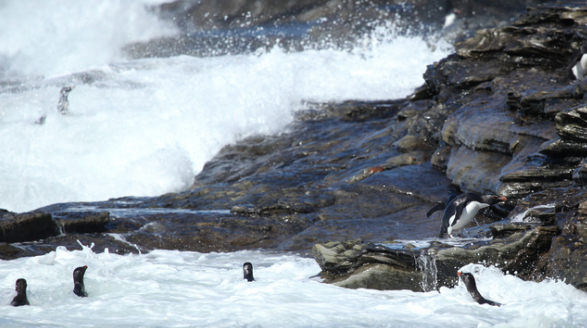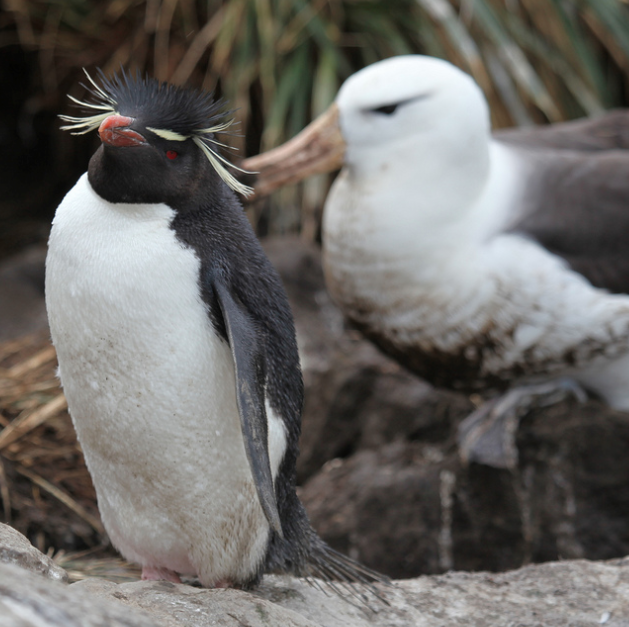Habitat & Geography
Eudyptes chrysocome (Southern Rockhopper
penguin) lives in the Tundra biome on rocky shores, hence their name.
They can be found on the islands surrounding Antarctica in the Southern
oceans such as the South Atlantic, South Pacific, and South Indian (Raya
Rey et al. 2012). The species exists as two subspecies with different
ranges. Eudyptes chrysocome chrysocome (Western Rockhopper penguin)
breeds primarily in New Island, Falkland Islands and other islands in
southern Chile and Argentina (Poisbleau et al. 2009). Subspecies
Eudyptes chrysocome filholi (Eastern Rockhopper penguin), on the other
hand, breeds at the tip of South Africa, New Zealand, as well as French
Southern Territories (BirdLife International 2010).
Although not the focus of this website, there is also a northern species of Rockhopper penguins called Eudyptes chrysocome moseleyi. This species can be found in the South Atlantic Ocean.
Western Rockhopper penguins inhabiting the Falkland Islands
off the coast of South Africa have been protected starting in the 1950s.
The protection is aimed to shield rockhopper penguins from land
predators that disrupt the
 stability of the food web resulting in a
potentially dangerous population decline (Dehnhard et al. 2013b). While
the Falkland Islands are the major breeding grounds for Western
Rockhopper penguins (Dehnhard et al. 2013b), Franklin Bay on Staten
Island in Argentina is still the most highly concentrated location in
the world for this subspecies (Raya Rey et al. 2012).
stability of the food web resulting in a
potentially dangerous population decline (Dehnhard et al. 2013b). While
the Falkland Islands are the major breeding grounds for Western
Rockhopper penguins (Dehnhard et al. 2013b), Franklin Bay on Staten
Island in Argentina is still the most highly concentrated location in
the world for this subspecies (Raya Rey et al. 2012).
Southern Rockhopper penguins build their nests on rock gullies, hence their common name, and on cliffs with deep, freshwater below. They prefer these cliffs because they are able to dive into the water from their nesting site (Bingham 2014).
Along with Southern Rockhopper penguins, sea lions, seals, southern giant petrels (Macronectes giganteus), black-browed albatrosses and other seabirds are found sharing the same habitat (Dehnhard et al. 2013a, Raya Rey et al. 2012).
Back To Classification
Home
References
Contact Us
Continue To Form & Function
